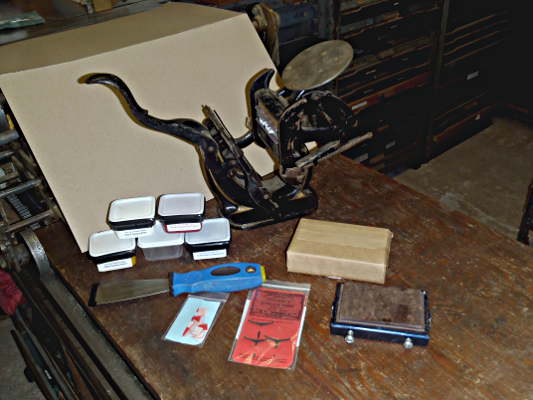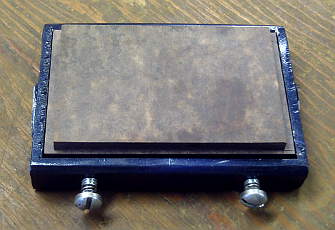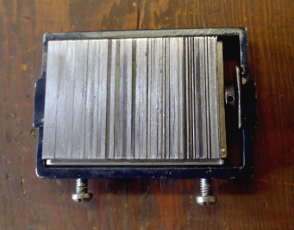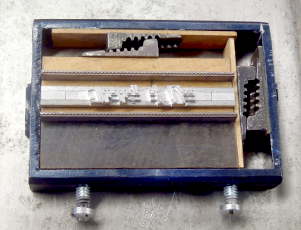
|
||||||||||||||||
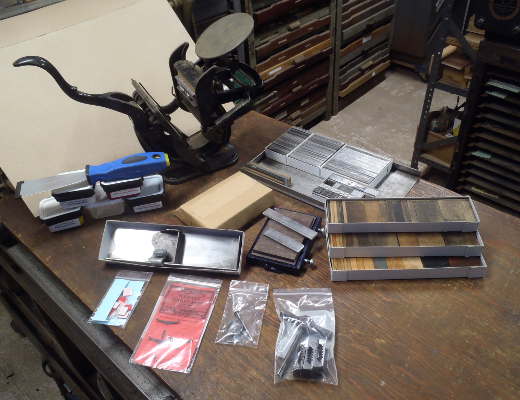 Some say that it was the success of Bill
Kelsey's Excelsior Presses that inspired Sigwalt
Manufacturing Company to make & sell very nearly
reproductions of Mr. Dorman's popular Baltimore Press.
Sigwalt also copied the Golding Official models in 3
sizes, later changing to a slightly modified version of
their own design. Some say that it was the success of Bill
Kelsey's Excelsior Presses that inspired Sigwalt
Manufacturing Company to make & sell very nearly
reproductions of Mr. Dorman's popular Baltimore Press.
Sigwalt also copied the Golding Official models in 3
sizes, later changing to a slightly modified version of
their own design. In fact, in Kelsey's 1938 catalog, the Kelsey company offered a 4x6" "Watson" press which appears to be virtually identical to Sigwalt's 4x6 "Ideal" model, however with a removable bed - a special and unique feature of Kelsey Excelsior models. Yes, these press makers were very competetive... In any case, the Sigwalt Chicago Press is often confused with Mr. Dorman's Baltimore Press (see both presses displayed at the top of this page) and they did compete with Kelsey for many years. One of the striking differences in marketing approach, was although Kelsey sold almost exclusively by direct mail and marketed in home work shop magazines, at different times in their history, Sigwalt sold through dealers, type foundries, printers' supply houses and, during one period, even chose to package and market their presses in retail locations - for example in large toy stores. As a result, there was some pretty fancy "Packaging" of some of their kits. They also sold through their own dealers and as late as 1957 were offering "distributor prices" to some even quite small retailers. As late as 1957, Sigwalt kits were being sold by American Type Founders' New York Sales office. The Chicago Presses - (note: we have encountered some conflicting references regarding the 3 Chicago model presses) #9 (with one ink roller) and #10 (with two ink rollers) (& historically No. 11) In any case, the Chicago models have extremely small chases - approx 2 1/2" x 3 3/4", with up to 1/8" variation in either dimension. Sigwalt claimed a 2 1/2 x 3 7/8" (in some literature, a 2 2/2 x 4") form size. However, since one side of the platen is open, corner copy can be printed on a larger sheet or on envelopes. The Ideal line of presses included 4 models with sizes ranging from the 3x5" No. 2 to the Ideal No.5 with a very practical form size of 6x9". These days, the #10 seem to be the most common Sigwalt in use.  Our new "Sigwalt Ideal No. 3 4x6"
Tabletop Our new "Sigwalt Ideal No. 3 4x6"
Tabletop(purchased for the collection 08/02/2016) This press is similar to the one below, however it has a straight handle, rather than the "stirrup grip" used on the larger presses. Chase size is only 4x6, but this one is really sturdy, utilizing a very different impression mechanism and should give any of the smaller Kelseys a good challenge... (purchased for the collection 12/2/2013) It has a 6x9 Chase, and looks like the one in the 1957 brochure blurb below. The earlier 6x9 press made by Sigwalt was the "NonPareil", but it had a round base like the Golding it was copied from. The Ideal appears to have appeared between 1912 and 1920 according to Glover Snow's notes. "Truly Deluxe Handy Size" Prints large 6x9" area. We'll add more photos and info as we begin restoring this press. It has a very interesting impression mechanism in the back and a clever gripper actuator as well. According to some sources, Sigwalt began manufacturing these presses by 1925 or so, and according to Glover Snow's notes, Sigwalt appeared on the scene about 1910. But according to by Ralph Green, who met with Mr. Sigwalt himself in 1943 and reported to Glover Snow in 1944, Sigwalt began making printing (or possibly stamping) presses around 1899. Their smaller presses roughly duplicated Mr. Dorman's Baltimore line and larger presses almost directly duplicated some of Golding's Official line. Production continued until about 1960. And, although a 1979 report suggests that the (wooden?) patterns used for casting parts were sold to a Chicago printer who had plans to continue production, we have found no record that they ever did. The advertising piece shown below was found among documents dated 1957. 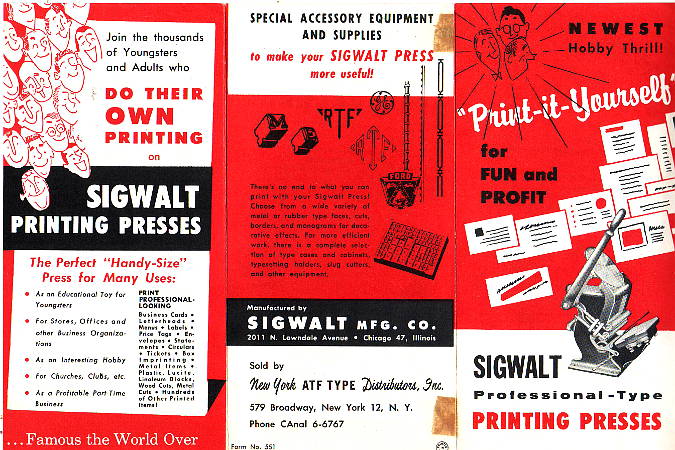 Note that circa 1960, Sigwalt Presses were being sold by New York's American Type Founders Distributor CLICK ON EITHER IMAGE TO VIEW FULL-PAGE .PDF FILES IN ADOBE ACROBAT 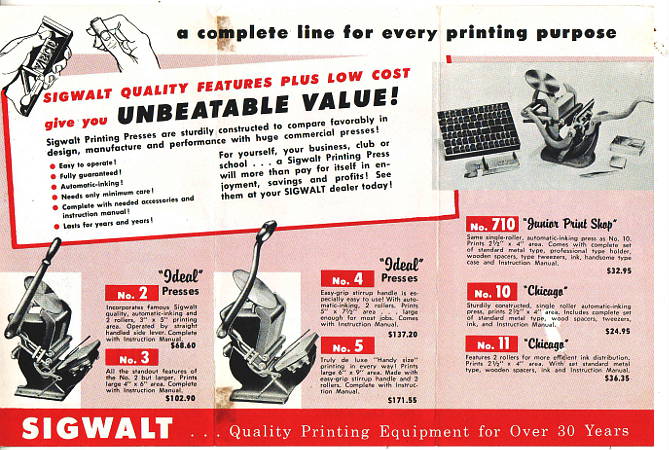 Below is a sheet from the Sigwalt 1908 catalog At that time, these presses were made with a round base - like the Goldings they were copied from. These presses were made from 1910-1915 and were admittedly direct copies of the Golding Official presses. Later, the base was changed to square and the press series' model numbers were changed. During WWII, The Model Press Company apparently made a 4x6 press that was a direct copy of one of the Sigwalts.  image shared with us by Chris Rorer and taken from Steven Saxe's copy of the 1908 Sigwalt catalog posted online at https://bit.ly/31xkFly
Further Reading...
|
||||||||||||||||
|
~~~~~~~~~~~~~~~~~~~~~~~~~~~~~~~~~~~~~~~~~~~~ |
||||||||||||||||


